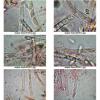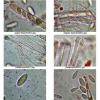
07-12-2025 16:07
Arnold BüschlenHallo, ich habe in einer Moos-Aufsammlung (epiohy

05-12-2025 17:33
 Bruno Coué
Bruno Coué
Bonjour, je serais heureux de recueillir votre avi

07-12-2025 09:24
De la pasada semana en Galicia EspañaEn el suelo

06-12-2025 00:19
 Viktorie Halasu
Viktorie Halasu
Hello, would anyone have this article, please? An

02-12-2025 18:59
This pair of ascos 2.5cm across were on recently b

02-12-2025 19:25
Buckwheat PeteHello, can anyone identify this hairy fungus growi
 Bonsoir à tous,
Bonsoir à tous,Pouvez-vous me donner une piste pour ce Ciborinia greffé sur sclérote noir en forme de banane, trouvé en aulnaie à ail des ours dans un mélange de matière organique (feuilles) pourrissantes et terre mêlée ?
a) asques IKI+
b) spores étroitement ellipsoïdes à ovales : 9-12,5x2,5-4,5
c) certaines spores présentent une enveloppe hyaline qui se détache (cf. spore1)
d) paraphyses filiformes, septées, certaines flexueuses au sommet
e) excipulum à textura globularis
Bernard

Hi Bernard,
can you tell us how many spores are in the asci? In your picture I see 4, but the foto maybe shows not the whole ascus.
Regards from Lothar

This is usually 4-spored but 8-spored apothecia also occur. Uwe Lindemann wrote an article on it for which I also supplied data. here attached.
Zotto


I'll check the number of spores per ascus in 30 minutes.
Bernard


I redid one preparation and I have predominantly observed 4spored-asci but sometimes with 3, 5, 6 or 8 spores !
Here are some more pictures of spores and paraphyses. Paraphyses are slightly swollen at the top and the spores are finally : 6-13x2,5-4,5
Bernard

Nuclei are difficult to see. usually staining with IKI helps.

Bernard
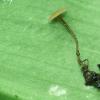
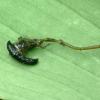
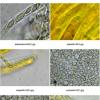
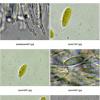
 Lindemann-2011-Sclerotinia-capillipes-0002.pdf
Lindemann-2011-Sclerotinia-capillipes-0002.pdf